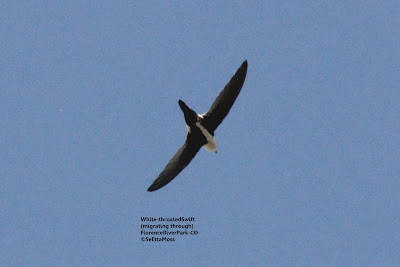On Saturday I was delighted to find dozens of warblers at Florence, CO River Park. Though they were mostly Yellow-rumped Warblers with a few Orange-crowned and Wilson's and one Townsend's, this was still a big event for this location (which has been degraded a bunch in past several years). As I watched and took photos I noticed that the leaves on the cottonwood tree leaves, where much of the frenetic feeding action was taking place, had several spots on each leaf. And most of the leaves on most of the cottonwood trees had these yellowish spots on their leaves. When I examined the leaves close up it appeared that there were insect larvae inside the leaves. In the bottom photo a few of the leaves look like the insect larvae might be maturing, causing parts of the spots to be blackened. Also the spots were more raised than the ones that were mostly yellow. More above. SeEtta







